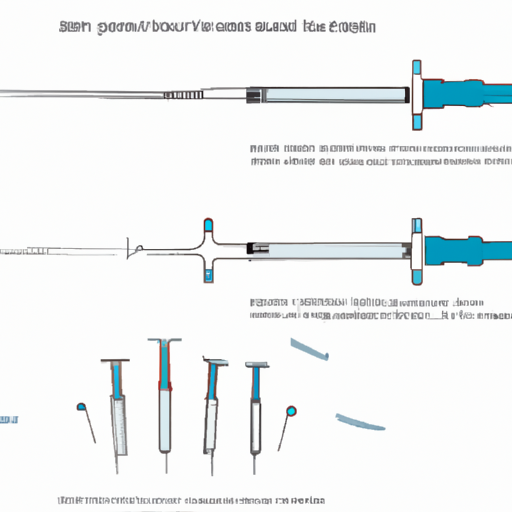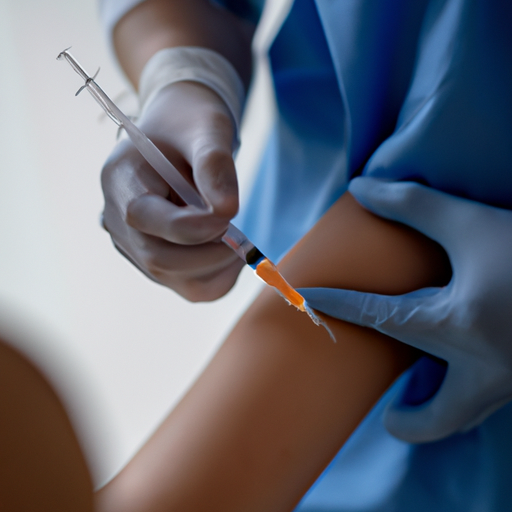This blog post is an in-depth exploration of needle-free injections, a revolutionizing technology that promises a future of pain-free, efficient, and safe drug delivery. It aims to answer all your questions about this innovative medical advancement, its working mechanism, benefits, and potential challenges.
1. What is a Needle-Free Injection? – A Leap Towards Pain-Free Medicine?
A needle-free injection, as the name suggests, is a revolutionary alternative to traditional needle injections. It offers a pain-free experience for patients and eliminates the fear and anxiety associated with needles. This innovative technology uses high-pressure systems or jet injectors to deliver medication through the skin without the need for a needle.
The concept of needle-free injections has gained significant attention in recent years, and for good reason. Not only does it provide a more comfortable experience for patients, but it also reduces the risk of needlestick injuries and eliminates the need for needle disposal, making it a safer and more environmentally friendly option.
The process of a needle-free injection involves creating a fine, high-velocity stream of medication that penetrates the skin and delivers the medication directly into the underlying tissues. This method allows for precise dosage control and targeted delivery, ensuring effective treatment.
Additionally, needle-free injections have the potential to improve patient compliance and adherence to treatment plans. The fear of needles can often deter individuals from seeking necessary medical care. With needle-free injections, patients can receive their medication in a painless and stress-free manner, increasing their willingness to undergo treatment and follow through with prescribed therapies.

1. An illustration showing the components of a needle-free injection device.
2. 'The future of medicine is here.' How does a Needle-Free Injection Work?
A needle-free injection works by utilizing various techniques to deliver medication through the skin without the use of a needle. One common method is the use of high-pressure systems, where the medication is forced through a small orifice at a high velocity, creating a fine stream that can penetrate the skin. This process is controlled and regulated to ensure precise dosage delivery.
Another technique involves the use of jet injectors, which use a pressurized gas or spring mechanism to propel the medication through the skin. The injector device contains a nozzle that directs the medication into the tissues, bypassing the need for a needle. This method allows for quick and efficient administration of medication, reducing the time required for injections.
In some cases, needle-free injections may utilize a transdermal patch or a micro-needle array. The patch contains microscopic needles that painlessly penetrate the outer layers of the skin, delivering the medication to the underlying tissues. This method is particularly useful for certain types of medications that require slow and continuous absorption.
Regardless of the specific technique used, the goal of a needle-free injection is to deliver medication directly into the desired area of the body without the pain and discomfort associated with traditional needle injections. The technology behind these injections continues to advance, with ongoing research and development focused on improving precision, safety, and efficacy.
לעוד פרטים נוספים בנושא של All you wanted to know about needlefree injection ו needlefree injection כדאי לבקר ב- injectneedlefree.com
3. Weighing the Pros and Cons: Is Needle-Free the Way to Go?
Needle-free injections offer several advantages that make them an appealing option for both patients and healthcare providers. Firstly, they eliminate the fear and anxiety associated with needle phobia, making it easier for individuals to receive necessary medications. This is particularly beneficial for children and individuals with a fear of needles, as it can help improve patient compliance and overall treatment outcomes.
Another advantage of needle-free injections is the reduced risk of needlestick injuries and associated infections. Healthcare workers are often at risk of accidental needlestick injuries, which can lead to the transmission of bloodborne pathogens. By eliminating the need for needles, needle-free injections significantly decrease this risk, promoting a safer healthcare environment.
Furthermore, needle-free injections offer a more convenient and efficient method of medication administration. Traditional needle injections often require skilled personnel to perform the procedure, leading to increased healthcare costs and longer waiting times for patients. Needle-free injections, on the other hand, can be self-administered by patients in the comfort of their own homes, reducing the burden on healthcare facilities and improving accessibility to treatment.
However, like any medical technology, needle-free injections also have their limitations and potential drawbacks. Some studies have suggested that certain medications may not be suitable for needle-free delivery, as they may require specific needle penetration depths or slower absorption rates. Additionally, the cost of needle-free injection devices and the need for specialized training in their use can pose financial and logistical challenges for healthcare providers.

3. A photo of a patient receiving a needle-free injection, appearing relaxed and comfortable.
4. Overcoming Challenges: What's Next in the Journey of Needle-Free Injections?
As needle-free injections continue to gain popularity and acceptance in the medical field, researchers and innovators are actively working towards overcoming the challenges associated with this technology. One area of focus is the development of more advanced and efficient delivery systems. This includes the exploration of novel technologies such as jet injectors, which use high-pressure streams of medication to penetrate the skin without the need for needles. These advancements aim to improve the accuracy and reliability of drug delivery, ensuring optimal therapeutic outcomes for patients.
Additionally, ongoing research is focused on expanding the range of medications that can be delivered using needle-free injection systems. While many drugs are already compatible with this technology, there are still certain formulations and molecules that present challenges in terms of stability and absorption. Scientists are working to overcome these barriers and develop innovative solutions to enable the delivery of a wider range of medications via needle-free injections.
Another important aspect in the journey of needle-free injections is the development of cost-effective and user-friendly devices. Currently, some needle-free injection systems can be expensive and require specialized training for proper use. Efforts are being made to make these devices more affordable and accessible, allowing for broader implementation in healthcare settings. Moreover, user-friendly designs and intuitive interfaces are being explored to enhance patient experience and ease of self-administration.
Furthermore, regulatory bodies and healthcare organizations are actively involved in establishing guidelines and standards for the use of needle-free injection technology. This includes ensuring the safety, efficacy, and quality of these devices and their associated medications. Collaborative efforts between industry leaders, healthcare professionals, and regulatory authorities are crucial in shaping the future of needle-free injections and promoting their widespread adoption.
All you wanted to know about needle-free injection:
| Topic | Description | Benefits | Challenges |
|---|---|---|---|
| Working Mechanism | How does a needle-free injection work? | What are the advantages of using this technology? | What are the potential challenges posed by this technology? |
| Safety | What measures are taken to ensure safety of patients when using a needle-free injection? | What are the benefits of using a needle-free injection? | What challenges could arise from using this technology? |
| Efficiency | What measures are taken to ensure the efficiency of a needle-free injection? | What are the advantages of using this technology? | What challenges could arise from using this technology? |
| Cost | What is the cost associated with using a needle-free injection? | What are the benefits of using this technology? | What challenges could arise from using this technology? |
Needle-free injection technology is undeniably a significant stride forward in delivering a more patient-friendly healthcare experience. Despite some challenges, its potential benefits in terms of pain reduction, prevention of needle-stick injuries, and improved medication absorption offer a promising future. As this technology continues to evolve, it is anticipated to become a standard for many treatments, making 'the fear of needles' a thing of the past.
